Penguins
Film Room: Penguins Speed is Beating Capitals; Floats Playoff Hopes
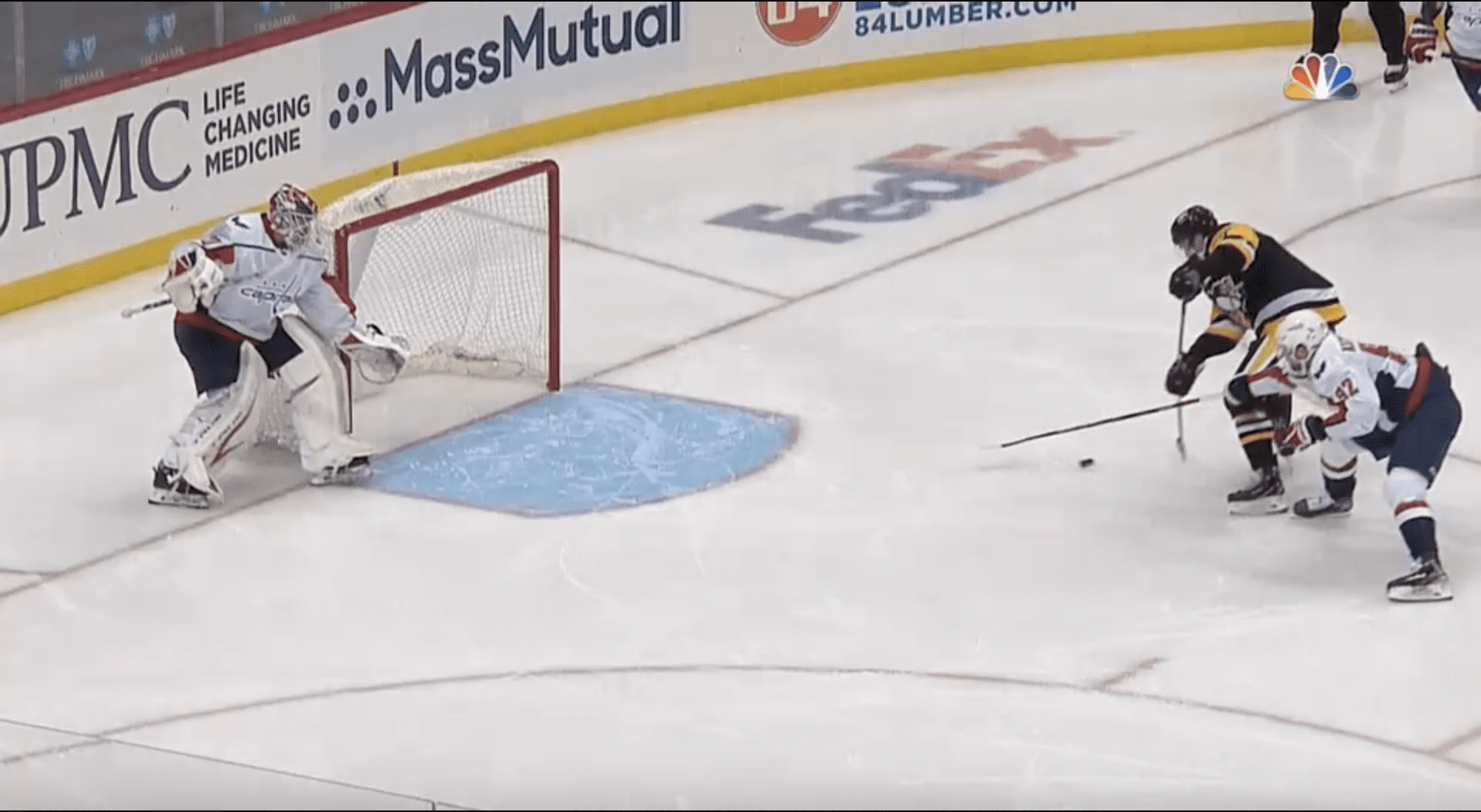
The Pittsburgh Penguins are technically in fourth place of the East Division. With fans’ wailing and gnashing about Evgeni Malkin and Kris Letang’s subpar performances, one may think the Penguins were in last place. The Penguins are one of five playoff-worthy teams in the East Division.
But only four teams will get a playoff berth. Cue the drama.
Despite the Penguins’ struggles with parts of their lineup, including production unbecoming of their second line, and a fourth line that head coach Mike Sullivan frequently leaves on the bench, they’re still in a playoff spot in a difficult division.
The “hows” are simple. Timely goals. Speed. Goaltending is about to join that list, too.
But let’s focus on the direct matchup between the Penguins and Capitals and why the Penguins have been successful against them this season (otherwise, this column will be three days long).
This season, the Penguins have scored 15 goals in just four games against Washington. We’re not counting the shootout winner on Jan. 17.
Penguins Speed vs. Washington Scheme
Under head coach Peter Laviolette, the Washington Capitals deploy a 1-3-1 with the LW making reads to charge forward or drop back to defend. It is the left wing lock, which Laviolette typically installs with his teams.
“When we have the ability to quick-strike and not allow them to get into any sort of defensive posture, that’s our opportunity to keep the puck and make plays off the rush,” head coach Mike Sullivan said. “When they are in the posture, they’re in a 1-3-1 look. It’s a left wing lock…”
At this point, I know many fans’ eyes glaze over. Hockey systems aren’t as sexy as a 3-4 blitz scheme, but in this case, I’ll do my best to make it Magic Mike for you.
LW LOCK
Very simply, the left wing lock uses the C and the RW as a forecheck/backcheck. Pending how conservative a team is playing, sometimes, the LW remains the high forward in the zone to get back on defense.
The left wing essentially acts as a defender (As memory serves, the Penguins adopted this tactic in the 1991 playoffs). The center and the right wing steer the puck carrier towards the left side and into the teeth of the defense, which now has three players.
Sullivan explained the Penguins attack. In the following context, “play behind them” means to chip-n-chase or dump-and-chase hockey.
“Lavy has played it for a long time where they have the center-field defenseman that can cheat back on pucks,” Sullivan explained. “So, our placement when we do play behind them has to be good. We’ve got an opportunity to get it back or put (the puck) under pressure. So, the decisions we make between the blue lines will be really important whether we keep the puck, or if we do choose to play behind them, we’ve got to place the puck in areas where we’ve got an opportunity to get it back or put it under pressure.”
In other words, the Penguins need smart locations for their dump-ins, but even better if they can transition against Washington and attack before the Capitals set up their 1-3-1.
We good so far?
1. As a prime example, we’ll use Colton Sceviour’s goal from Jan. 17. The Penguins transition game and speed won the day.
Before I break it down, here’s the goal at full speed:
The highlight clearly showed the Washington scheme and but the Penguins were a step ahead. We’ll start with the beginning of the play. The C and winger are forechecking. In this case, the LW and RW Tom Wilson make a switch.
Look at the bottom of the screen. Tom Wilson takes the high-forward position and retreats. Here’s the still photo:
I apologize for the blurriness. That’s on the NHL.
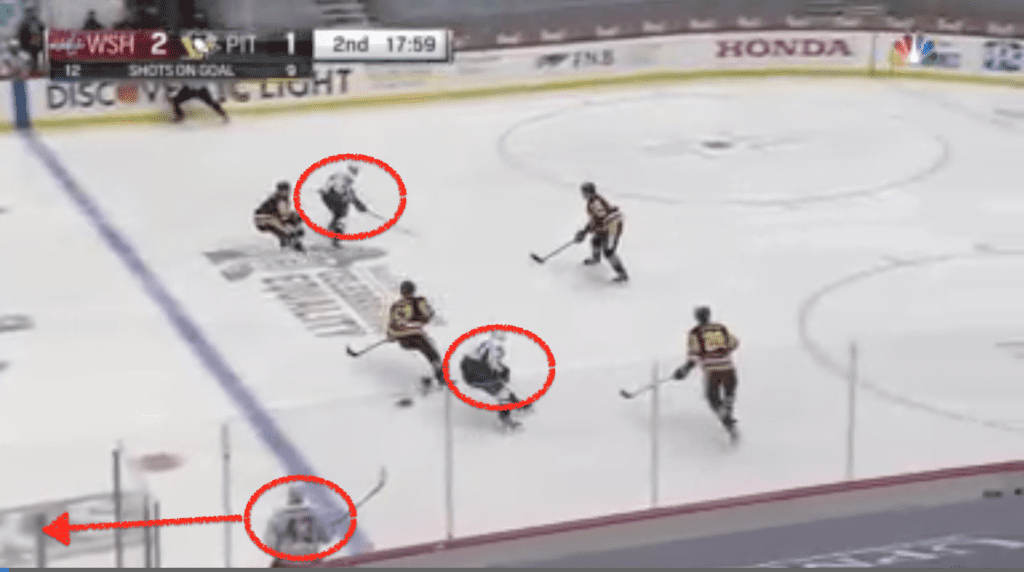
The Pittsburgh Penguins have already beaten the Washington Capitals three times this season. Except for one lackluster performance, the Penguins have skated past Washington, including a 6-3 drubbing 10 days ago.
Of course, through the NHL’s quirk of overtime losses, the Penguins are 3-1-0, but Washington is 1-1-2. Anyway…
The Penguins’ speed has grown exponentially with recent additions of players such as Kasperi Kapanen, Jason Zucker, Brandon Tanev. Even defensemen Mike Matheson and P.O. Joseph add to the Penguins’ advantage.
Teddy Blueger is lightning quick, too.
The great thing about the play above is the multiple examples of the Penguins’ speed. Defenseman John Marino has the puck on his stick facing two forecheckers. His quick first pass slipped Blueger past the Washington forecheck, which gave the Penguins control of the situation.
Blueger and Sceviour gained the red line and chipped it to the soft spot in the Washington zone.
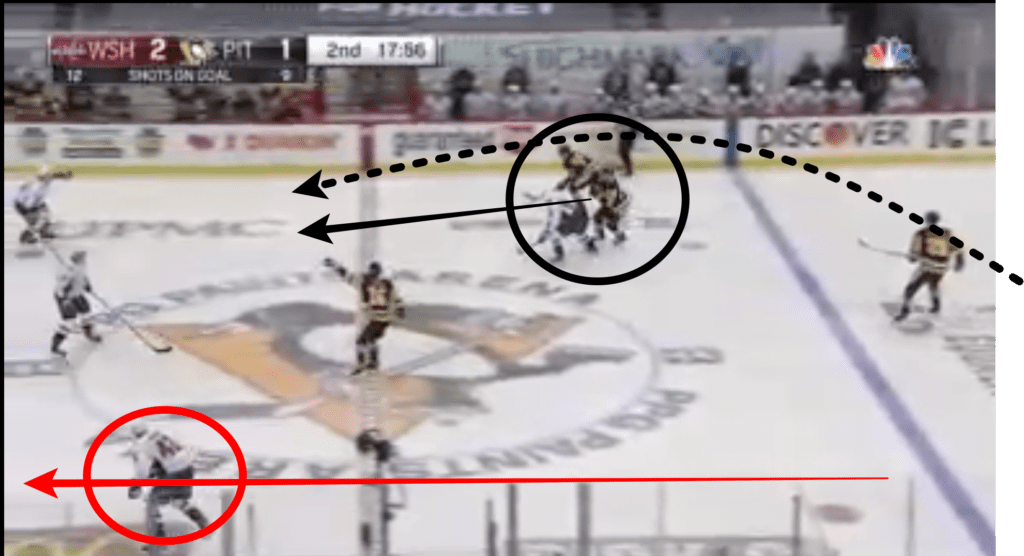
Even though the Penguins were initiating a line change, their speed created a scoring chance. Watch Teddy Blueger win the race against three Washington players.
For purposes of understanding Washington’s system, look at the line of three players back in the zone, ready to defend. That is why Washington is tough to play against. Marino’s quick pass out of the defensive zone, which avoided being trapped by the forecheck or steered into the teeth of the defense in the middle of the ice, set up this chance. Blueger’s speed both backed the Washington defense and won the puck battle.
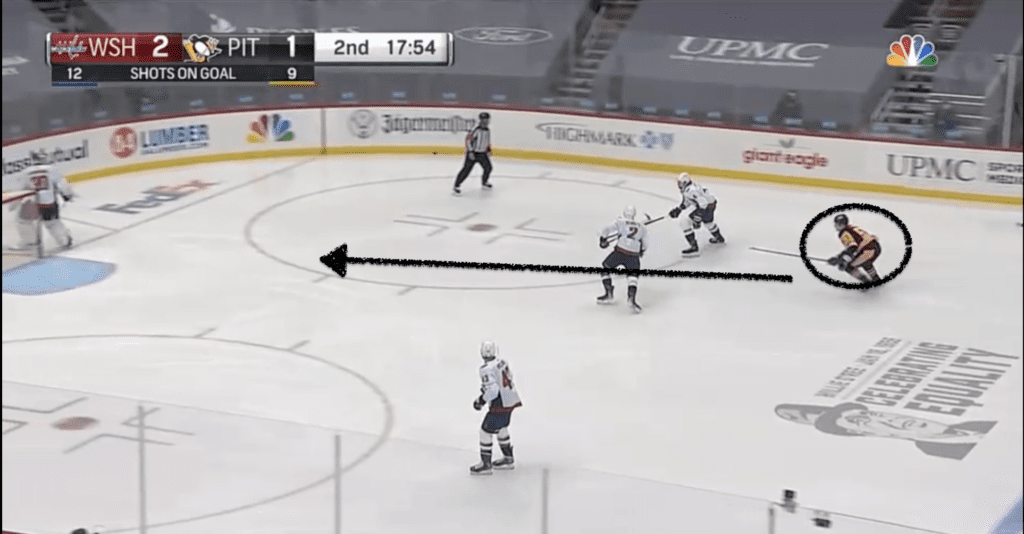
Blueger got behind all three defenders to win the puck. Washington goalie Vitek Vanecek saw Sceviour cover his forehand option, so he went to the backhand, where Blueger pounced.
The Pittsburgh Penguins put a tying goal on the scoreboard like this.
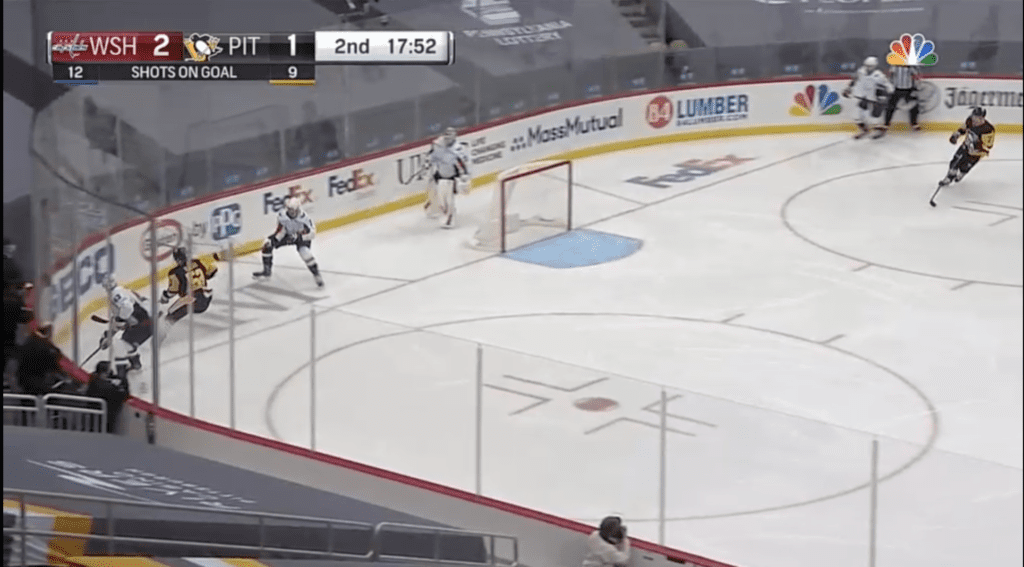
Washington has looked slower, or perhaps the Penguins very fast, in their meetings this season. On paper, Washington is deeper and a better team, but the Penguins continue to win pucks and play the game a step ahead of Washington, then the strength of their four lines is greatly diminished compared to the Penguins.
The Penguins haven’t played many complete games this season, but their 6-3 win last week was simply a case of skating Washington out of PPG Paints Arena. That should buoy the Penguins’ playoff hopes and scare Washington.
Pittsburgh Penguins practice:
Above, Sullivan referenced transition and quick strike. That’s exactly the drill the Penguins worked on in practice on Monday, which drove home the message the Penguins coaches are trying to send about quick transition, finding the options during the transition, and quick-strike opportunities in the offensive zone.
It wasn’t until I put the pieces of the above together that the drill’s purpose came into focus (with a lot of help from a good hockey coach). It’s about quickly getting out of the defensive zone and quickly getting into scoring positions from gained possession in the offensive zone.
Watch for Washington’s winger, usually LW, to drop to the high zone in a defensive posture. That allows one of the defensemen to jump into the play or stack the defensive blue line against the Penguins rush.
Speed is the best offense. And the Penguins have it. And that may be the best explanation why the Pittsburgh Penguins are currently in a playoff spot and competing with the best of the East Division.












